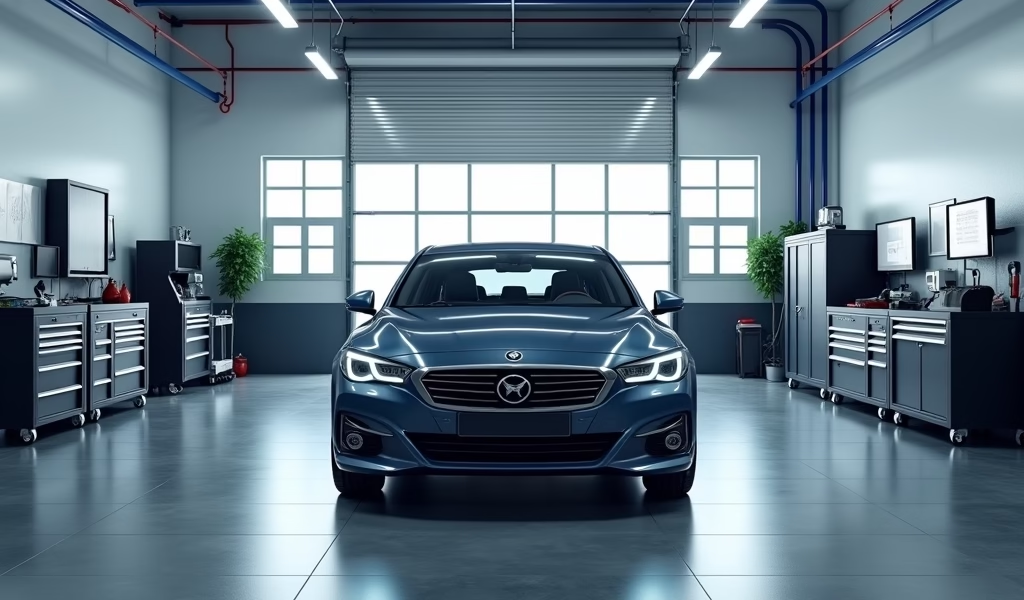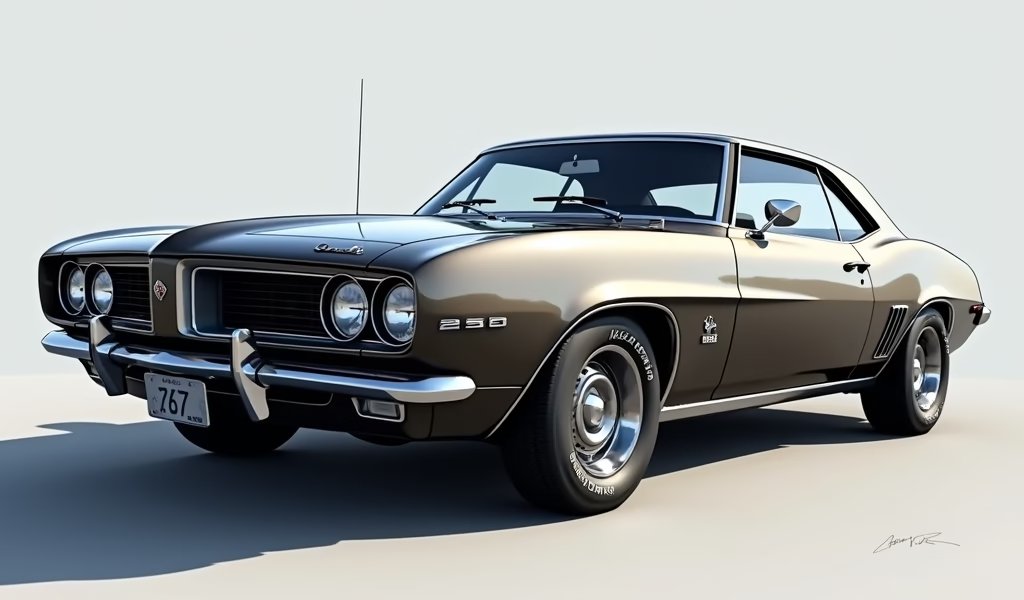Overview
This guide emphasizes that proper maintenance is crucial for extending the life and value of used vehicles, covering essential areas from pre-purchase inspections to regular fluid changes, tire care, electrical system checks, and preventative maintenance schedules. The article provides both DIY and professional maintenance recommendations, highlighting that consistent care is the key difference between a used car that becomes a 200,000-mile champion versus one that ends up in a junkyard by 120,000 miles.
Table of Contents
- Understanding the Used Car Market
- Pre-Purchase Inspection: Your First Line of Defense
- Essential Maintenance Checks for Used Cars
- Fluid Maintenance: The Lifeblood of Your Vehicle
- Tire and Brake Care: Safety First
- Electrical System and Battery Maintenance
- Preventative Maintenance Schedule
- Cost-Saving Maintenance Tips
- DIY vs. Professional Maintenance
- Extending Your Used Vehicle’s Life
- Conclusion
- Frequently Asked Questions
Understanding the Used Car Market
When diving into the world of used cars for sale, you’re entering a marketplace filled with both tremendous opportunities and potential pitfalls. As a mechanic who’s seen thousands of vehicles roll through my shop, I can tell you that a well-maintained used car can be a brilliant investment. The key word here is “maintained.” Unlike new vehicles that come with that reassuring factory warranty, used cars come with history – sometimes documented, sometimes mysterious.
Today’s used car market is more robust than ever. With vehicles built to last longer and technology improving durability, a quality pre-owned vehicle can easily surpass 200,000 miles with proper care. However, the secret to making a smart purchase isn’t just about finding a good deal initially – it’s about understanding how to maintain your investment for years to come.
What many new used-car owners don’t realize is that maintenance is actually more critical for pre-owned vehicles than new ones. The right care regimen can be the difference between a dream car and a money pit. Let’s explore how to keep your used vehicle running smoothly while protecting your investment.
Pre-Purchase Inspection: Your First Line of Defense
Before we talk about maintaining a used car, we need to start with making sure you’re buying a maintainable vehicle in the first place. Think of a pre-purchase inspection as your insurance policy against major headaches down the road. It’s the single most important step when looking at used cars for sale in today’s market.
A professional pre-purchase inspection typically costs between $100-$200, but this small investment can save you thousands in unexpected repairs. As a mechanic, I’ve seen countless customers who skipped this step only to discover expensive problems weeks after purchase. Here’s what a thorough inspection should cover:
- Complete mechanical assessment including engine, transmission, and drivetrain
- Comprehensive electrical system check
- Underbody examination for rust, damage, or leaks
- Tire condition and alignment evaluation
- Brake system inspection
- Verification of all accessories and features
Don’t rely solely on a vehicle history report. While services like Carfax can reveal accidents and service history, they don’t tell the whole story. I’ve seen perfectly clean reports on vehicles with significant mechanical issues that hadn’t yet been documented.
If you’re not mechanically inclined, bring a friend who is or hire an independent mechanic. Many shops offer mobile inspection services and will meet you at the seller’s location. This small step is truly your best protection when navigating used car purchases.

Essential Maintenance Checks for Used Cars
Once you’ve found and purchased a solid used vehicle, establishing a maintenance baseline is critical. Within the first month of ownership, I always recommend my customers complete what I call a “new-to-you” maintenance reset. This approach ensures you’re starting fresh, regardless of what the previous owner may or may not have done.
Your essential maintenance checklist should include:
- Complete oil and filter change (even if the seller claims it was just done)
- Air filter replacement
- Cabin air filter replacement
- Spark plug inspection or replacement (based on mileage)
- Timing belt/chain inspection (particularly critical on higher mileage vehicles)
- Cooling system flush if there’s no record of recent service
- Transmission fluid assessment and potential change
The beauty of this reset approach is that it gives you peace of mind and establishes your own maintenance timeline. Used cars often come with spotty maintenance records, so this gives you a clean slate to work from. Plus, it gives you (or your mechanic) a chance to identify any potential issues while they’re still minor.
Remember, preventative maintenance will always be less expensive than reactive repairs. That $30 oil change might seem like an unnecessary expense if the previous owner claims they just did it, but it’s a small price to pay compared to a $3,000 engine repair down the road because of accumulated sludge or contamination.
Fluid Maintenance: The Lifeblood of Your Vehicle
If there’s one area where I see used car owners consistently fall short, it’s fluid maintenance. Your vehicle relies on various specialized fluids to function properly, and each has its own replacement schedule. With used cars, these fluids become even more critical because they may have been neglected by previous owners.
Here’s a breakdown of the essential fluids to monitor:
- Engine oil: The most critical fluid; change every 3,000-7,500 miles depending on your vehicle and oil type
- Transmission fluid: Often overlooked but vital; check color and smell monthly and change according to manufacturer recommendations
- Brake fluid: Should be clear to slightly amber; replace every 2 years or when it becomes dark
- Power steering fluid: Check monthly for level and condition
- Coolant: Prevents both overheating and freezing; flush and replace every 30,000-60,000 miles
- Differential fluid: Often completely forgotten but crucial for drivetrain health
Fluid degradation happens incrementally, making it easy to miss until damage occurs. For instance, transmission fluid doesn’t suddenly fail – it gradually loses its protective qualities over thousands of miles. By the time you notice shifting problems, internal damage may already be occurring.
One tip I give all my customers: keep a small notebook in your glove compartment and record each fluid service with the date and mileage. This creates your own maintenance history that you can reference and will add value if you eventually sell your used car to someone else.
According to Consumer Reports’ research on vehicle longevity, regular fluid maintenance is one of the most significant factors in extending a vehicle’s lifespan, potentially adding years of reliable service.
Tire and Brake Care: Safety First
When it comes to used cars, two systems deserve special attention for both safety and economic reasons: tires and brakes. These components are in constant contact with the road and naturally wear down over time. As a mechanic, I’ve seen too many accidents that could have been prevented with proper tire and brake maintenance.
For tires, implement these practices:
- Check pressure monthly (including the spare) using a quality gauge, not just visual inspection
- Rotate tires every 5,000-7,000 miles to ensure even wear
- Align the wheels at least annually or whenever you notice pulling/vibration
- Replace tires when tread depth reaches 4/32″ (don’t wait for the legal minimum of 2/32″)
- Inspect sidewalls for cracks, bulges, or damage monthly
For your braking system:
- Listen for squealing, grinding, or other unusual noises when braking
- Pay attention to pedal feel – any sponginess or excessive travel needs immediate attention
- Have brake fluid tested for moisture content annually
- Inspect brake pads and rotors at every tire rotation
- Never ignore vibration during braking – this indicates warped rotors
One often overlooked aspect of used car maintenance is brake fluid hygroscopicity – its tendency to absorb moisture from the air over time. This moisture can corrode internal brake components and reduce braking efficiency. Most manufacturers recommend changing brake fluid every 2-3 years, but many used cars haven’t had this service performed in much longer.
Remember that while mechanical failures can leave you stranded, brake failures can be catastrophic. This is one area where proactive maintenance isn’t just about saving money – it’s about saving lives.

Electrical System and Battery Maintenance
The electrical system in modern used cars is both sophisticated and vulnerable. Unlike mechanical systems where problems often develop gradually with warning signs, electrical issues can appear suddenly and mysteriously. In my years as a mechanic, I’ve seen countless drivers stranded by preventable electrical failures.
Battery maintenance is your first line of defense. A typical car battery lasts 3-5 years, so if you’re purchasing a used car that’s a few years old, you might be inheriting a battery on its last legs. Here’s how to maintain your electrical system properly:
- Clean battery terminals regularly to prevent corrosion buildup
- Have battery load-tested annually, especially before winter
- Check all lights monthly (headlights, brake lights, turn signals, etc.)
- Listen for any unusual sounds when starting (slow cranking often indicates battery issues)
- Consider a battery maintainer/trickle charger if the vehicle sits unused for extended periods
Beyond the battery, pay attention to your alternator and starter. These components work together to power your vehicle and often give subtle warnings before failing completely. Dimming headlights during idling, a persistent battery warning light, or unusual noises during starting are all red flags that deserve immediate attention.
With used cars specifically, I recommend having a full electrical system scan performed annually. Many shops offer this service for around $50-100, and it can identify weak components before they leave you stranded. According to J.D. Power’s Vehicle Dependability Study, electrical problems are among the most common issues reported in 3-5 year old vehicles.
Preventative Maintenance Schedule
Creating a tailored maintenance schedule is essential when you purchase a used car. Factory-recommended intervals provide a good starting point, but used vehicles often require more frequent attention. Based on my experience working with thousands of vehicles, here’s a practical maintenance timeline you should follow:
- Monthly: Visual inspection of tires, fluid levels, and lights
- Every 3,000-5,000 miles: Oil change (conventional oil) or 5,000-7,500 miles (synthetic oil)
- Every 15,000 miles: Air filter replacement, rotate tires, inspect brakes
- Every 30,000 miles: Major service including transmission fluid, fuel filter, spark plugs
- Every 60,000 miles: Timing belt inspection/replacement (if applicable), cooling system flush
- Every 100,000 miles: Complete drivetrain inspection including differential fluid
However, this schedule should be adjusted based on your specific vehicle’s age, condition, and previous maintenance history. For instance, if you purchased a 10-year-old vehicle with spotty maintenance records, you might want to compress this timeline significantly.
One tool I recommend to all my customers is a maintenance tracking app or simple spreadsheet. Document every service with the date, mileage, and what was performed. This creates accountability and helps you spot patterns or recurring issues that might indicate larger problems.
Remember that different driving conditions also affect maintenance needs. If you primarily drive in stop-and-go city traffic, dusty environments, or extreme temperatures, you’ll need more frequent maintenance than someone with primarily highway miles in moderate conditions.
Cost-Saving Maintenance Tips
Maintaining a used car doesn’t have to break the bank. After decades in the shop, I’ve developed several strategies that help my customers save money while keeping their vehicles in top condition. The key is knowing where you can economize and where you absolutely can’t.
First, learn which maintenance tasks you can safely perform yourself:
- Air filter replacements (typically a 5-minute job requiring no special tools)
- Wiper blade replacement
- Light bulb changes (though some modern vehicles make this surprisingly complex)
- Tire pressure monitoring and adjustment
- Basic fluid level checks
Even if you’re not mechanically inclined, these simple tasks can save hundreds of dollars annually. Just be sure to consult your owner’s manual for specific instructions for your vehicle.
Next, be strategic about where you get professional service. Dealerships typically charge 30-40% more than independent shops for identical work. Find a reputable independent mechanic with experience in your specific make of vehicle. Build a relationship with this shop – loyal customers often receive priority service and occasional discounts.
When parts need replacement, ask about your options. For non-critical components on older vehicles, quality aftermarket parts are often perfectly adequate and significantly less expensive than OEM (Original Equipment Manufacturer) parts. However, for critical systems like brakes or major engine components, OEM parts may provide better reliability and longevity.
Finally, never defer maintenance to save money. This almost always costs more in the long run. For instance, skipping a $30 oil change might eventually lead to a $3,000 engine repair. True economy comes from regular, timely maintenance, not from deferring necessary service.
DIY vs. Professional Maintenance
As a mechanic, I’m often asked what maintenance tasks owners should tackle themselves versus when they should seek professional help. With used cars specifically, this question becomes even more important since maintenance costs directly impact the economics of used car ownership.
Tasks most owners can handle safely include:
- Changing wiper blades (an easy 5-minute job)
- Replacing air filters (both engine and cabin)
- Battery terminal cleaning
- Light bulb replacements (though this varies by vehicle model)
- Tire pressure checks and adjustments
Tasks that typically require professional attention:
- Brake system repairs or replacements
- Timing belt replacements
- Transmission service
- Engine diagnostics and repair
- Alignment and suspension work
The middle ground – tasks that handy owners with proper tools can handle, but others might prefer professional help:
- Oil changes (consider disposal regulations and environmental impact)
- Spark plug replacements (on easily accessible engines)
- Battery replacements
- Tire rotations (if you have proper jack equipment)
If you’re just starting to learn car maintenance, begin with simple tasks and gradually build your skills and tool collection. Online tutorials and factory service manuals can be invaluable resources. Always prioritize safety – proper jack stands, wheel chocks, and appropriate tools are essential.
Remember that diagnostics is often where professional expertise becomes most valuable. Modern vehicles contain sophisticated computer systems that require specialized equipment to properly diagnose. A professional mechanic doesn’t just fix problems – they identify the root cause, preventing recurrence and potentially saving you from unnecessary parts replacement.
Extending Your Used Vehicle’s Life
Beyond regular maintenance, several practices can dramatically extend the lifespan of your used car. These habits cost little or nothing but can add years to your vehicle’s useful life – something I’ve observed consistently throughout my career.
Driving habits make an enormous difference. Avoid these engine-killing behaviors:
- Cold revving (revving the engine before it reaches operating temperature)
- Short trips that don’t allow the engine to fully warm up
- Aggressive acceleration and braking
- Ignoring warning lights or unusual noises
- Overloading beyond weight recommendations
Storage and protection matter too. When possible, park your vehicle in a garage or under cover to protect it from harsh elements. UV exposure gradually degrades exterior finishes, while extreme temperatures stress various components. If garage parking isn’t available, consider a quality car cover for extended periods of non-use.
Regular cleaning isn’t just about aesthetics – it prevents premature deterioration. Road salt and other contaminants accelerate corrosion, while dirt and debris can damage moving parts and seals. A thorough underbody wash is particularly important if you live in regions that use road salt during winter months.
Finally, use quality fluids and parts. The few extra dollars spent on proper-grade oil, quality filters, and manufacturer-recommended fluids pay dividends in longevity. This becomes increasingly important as vehicles age and components have accumulated more wear.
Conclusion
When it comes to used cars for sale, finding a good vehicle is just the beginning of the journey. The real value comes from how you maintain your investment over time. As I’ve seen throughout my career, the difference between a used car that becomes a 200,000-mile champion and one that ends up in the junkyard by 120,000 miles often comes down to one factor: consistent, quality maintenance.
Remember that maintenance isn’t just about preventing breakdowns – it’s about preserving value, ensuring safety, and maximizing your return on investment. A well-maintained used vehicle can provide reliable transportation for many years with significantly lower depreciation than a new car.
Start with a thorough pre-purchase inspection, establish your maintenance baseline, and then follow a consistent schedule tailored to your specific vehicle. Pay special attention to fluids, tires, brakes, and electrical systems – the areas where problems most commonly develop in used vehicles.
By combining smart DIY maintenance with strategic professional service, you can enjoy the economic benefits of used car ownership without the headaches that come from neglect. Your used car isn’t just transportation – it’s an investment that deserves proper care.
Frequently Asked Questions
What’s the most important maintenance check for a newly purchased used car?
A complete oil change and filter replacement, regardless of what the seller claims about recent service. This gives you a fresh starting point and removes any contaminated oil that could damage your engine.
How often should I change the oil in my used car?
For conventional oil, every 3,000-5,000 miles; for synthetic, every 5,000-7,500 miles. Older used vehicles or those with high mileage often benefit from more frequent changes at the lower end of these ranges.
Are extended warranties worth it for used cars?
Third-party warranties vary greatly in quality and coverage, so read the fine print carefully. Manufacturer-certified pre-owned warranties are typically more reliable and offer better coverage for major systems.
Should I follow the maintenance schedule in my owner’s manual for a used car?
Use it as a starting point, but generally perform maintenance more frequently than recommended. Factory schedules are designed for vehicles with perfect maintenance history, which most used cars don’t have.
What’s one maintenance item that used car owners most commonly neglect?
Transmission fluid service is frequently overlooked but critical. Many transmission failures in used cars result from fluid that has degraded over time and lost its protective properties.

